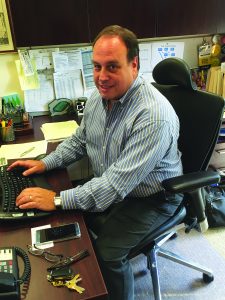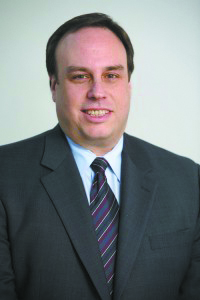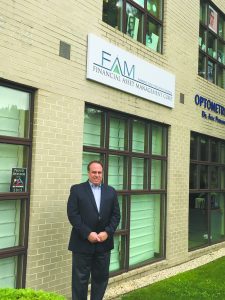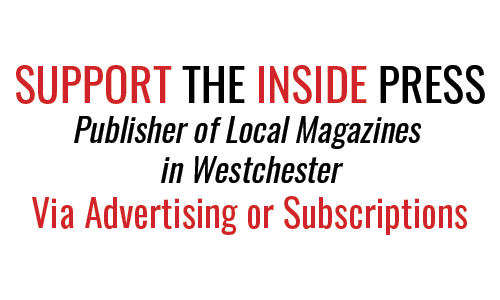
Photo by Matt Smith
As the average layperson might attest, financial planning can be quite the daunting task. You may feel so overwhelmed with all the other business associated with your child going to college, or facing that impending retirement, that perhaps you may simply forget the financial aspect until it’s too late. Maybe you fall into that group of people who are so confused by the jargon that they put it off altogether in fear of it being too complicated to handle. Or, you may be one of a few who think they’ve got it all covered with their basic number crunching and investment portfolios, but who doesn’t yet realize there’s so much more to do. Whatever your reason, financial management expert Scott M. Kahan, CFP®, wants you to rest assured that he and his staff at Financial Asset Management Corporation know exactly how to help!
Since 1986, Kahan, founder and President of FAM, has been serving the good people of Chappaqua (and some in Manhattan, where also has an office) with the time-tested belief of putting his clients’ needs first.
“Being a small firm, we get very involved with our clients’ lives [and] we take things very seriously,” he says, of FAM’s approach. “It’s a personalized service that allows us to fully understand our client’s goals and objectives. We’re here to work for the client…With us, what you see is what you get.”
And to that end, “what you see” is quite extensive. The firm offers comprehensive wealth management, including both financial planning (cash flow, saving for college, tax planning, retirement planning, and insurance review) and investment management, all with that same emphasis of valuing clients’ needs above all else. “We’re a fee-only firm [meaning we don’t generate commission; our compensation comes solely from our clients], and we act solely as fiduciaries.” Acknowledging “money can cause a lot of stress,” he adds that “our goal and role is to alleviate that stress through conversation.”
The first introductory meeting at FAM is completely free, allowing potential clients and advisors alike to gauge how they can help each other. “We describe financial planning as a road map,” Kahan explains. “If you want to [drive] from New York to California, you have to plan out your trip.” Similarly, that initial meeting with a financial advisor “will address where [a client] wants to go, what the obstacles are, and how they can successfully [evade them].”
Indeed, it’s quite the lengthy process, but that’d be the case anywhere…and there’s no question clients appreciate the one-on-one, ethical approach. “[Clients] know that if they come and work with us, they’re going to get honest answers,” Kahan continues. “We will give [them] the education they need, and provide as many resources as they need until they feel comfortable.”
For Kahan, a belief in “doing what’s in the client’s best interest” isn’t limited to his work professionally; it also holds great significance in his personal relationships with people throughout the community. “For me, it’s about also giving back,” Kahan continues. “As a Chappaqua resident for the last 22 years, [with] two kids that went through the school system and graduated from Greeley, I take a lot of pride in this community…I think it’s important to get involved and give back.”
And give back he has. In addition to his professional offerings at FAM, he previously served as Treasurer on the Board for the Horace Greeley Scholarship Fund for two terms, spanned over 11 years. (“It’s a great organization that helps make up the difference for Greeley graduates to pay for college.”) With the help of a local college financial director, Kahan also presents an annual seminar at Horace Greeley High School as part of their Financial Aid Night to help parents prepare and plan to pay for college, noting, “Besides retirement, [paying for college] is probably the biggest financial concern parents have.”
In addition to his local work, Kahan is also currently a Trustee for the Foundation for Financial Planning, a national organization which provides funding for the military and other underserved groups to receive pro bono financial planning.
Whomever he is advising, Kahan maintains that when done properly and correctly, financial planning can really work. Judging by his approach, it’s easy to see why his clients agree: “They just feel relieved, getting up and walking out knowing that a) they have someone to talk to about their financial issues and b) they know someone is going to provide objective advice and help them reach their goals.” And knowing he’s played a part in making it happen, Kahan simply couldn’t be happier.
Financial Asset Management Corporation is located at 26 S. Greeley Avenue in Chappaqua. For more information, call 914-238-8900 or visit www.famcorporation.com.
Matt Smith is a writer and regular contributor to The Inside Press. For further information or inquiry, please visit www.mattsmiththeatre.com.
 By Scott Kahan
By Scott Kahan  By Scott Kahan
By Scott Kahan 